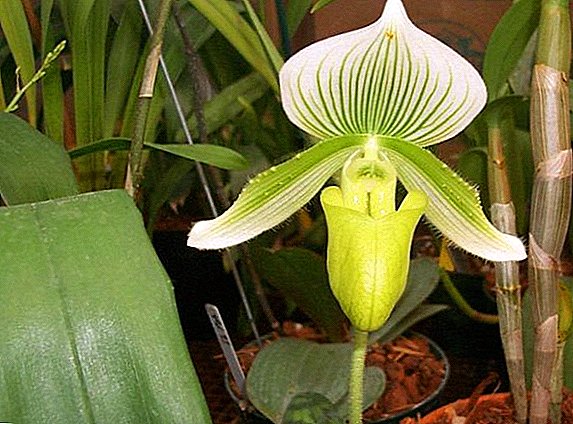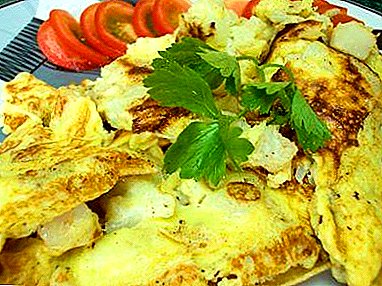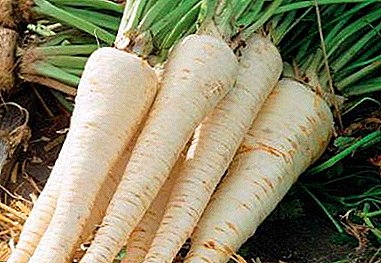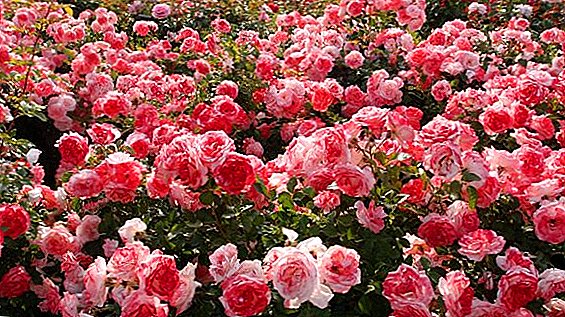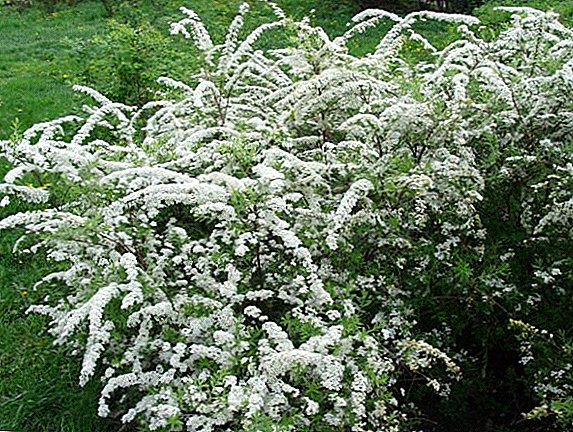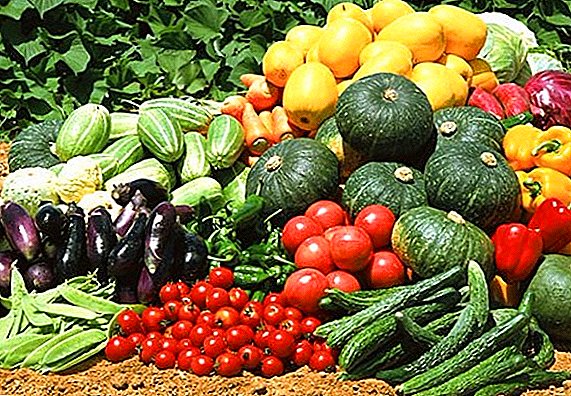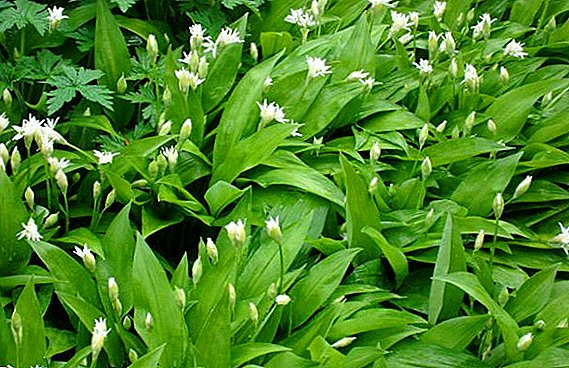 Ramson is a perennial herb of the Onion family. Its bulb and elongated leaves are eaten and used as a medicine.
Ramson is a perennial herb of the Onion family. Its bulb and elongated leaves are eaten and used as a medicine.
Chemical composition of wild garlic
Ramson has a rich chemical composition, which includes: sulfuric hydrocarbon allicin, essential oil, protein, glycoside alanine, lysozyme (natural antibiotic), phytoncides, soluble mineral and extractive substances.
Ramson is rich in vitamins. A hundred grams of a plant contains:
- Vitamin A, beta carotene: 4 mg
- Vitamin B 1, thiamine: 0.03 mg
- Vitamin b 2, riboflavin: 0.14 mg
- Vitamin B 3, PP, niacin: 0.48 mg
- Vitamin B 9, folic acid: 40 mcg
- Vitamin C, ascorbic acid: 100 mg.
 Essential oil includes allyl sulfides, pinokolinic acid and alliin. Ramson leaves are rich in microelements: iron, zinc, fluorine, molybdenum, manganese, aluminum, chromium. The macronutrients contained in the garlic are calcium, phosphorus, potassium, sodium, magnesium. In the leaves of wild garlic, a high concentration of selenium and copper is observed.
Essential oil includes allyl sulfides, pinokolinic acid and alliin. Ramson leaves are rich in microelements: iron, zinc, fluorine, molybdenum, manganese, aluminum, chromium. The macronutrients contained in the garlic are calcium, phosphorus, potassium, sodium, magnesium. In the leaves of wild garlic, a high concentration of selenium and copper is observed.Did you know? In March, the annual Ramson Festival is held in the German city of Eberbach. At a huge fair sell a variety of dishes from this plant: sausages, meat, bread, pies, sauces. you also cango on a tripin the garden of medicinal herbs and learn all the secrets of gathering and cooking wild garlic.
What is useful ramson, medicinal properties of the plant
From what just does not save the cherries. Drugs based on this plant have antihelminthic, antimicrobial, bactericidal, fungicidal and antiscorbutic effect, increase appetite, increase the secretion of digestive glands, increase the intestinal motor function. As a medicinal raw material, wild garlic is used in modern medicine, and in almost all countries of the world. On its basis, preparations of a tonic effect are produced, promoting an increase in appetite and facilitating digestion. It is also used as a wound healing agent for cervical erosion.
More in ancient Rome wild garlic (her infusions or decoctions) cleaned the stomach and blood. In ancient recipes, the plant was used to prevent plague, cholera and other infections. Many nations now use the plant for skin diseases, for colds, as an expectorant and thinning agent for coughing.
It relieves rheumatic pains, sciatica and fever symptoms. However, using this plant for medicinal purposes, you should not get too carried away. Ramson has not only useful properties, but also has certain contraindications, about which we will tell a little later.
 Ramson is useful in raw, pickled and salted form. to strengthen the immune system, against beriberi, with anemia and as a fortifying agent. Due to the beneficial substances in its composition, it has fibrinolytic and thrombolytic properties, prevents the accumulation of cholesterol, stimulates cardiac activity, normalizes blood pressure.
Ramson is useful in raw, pickled and salted form. to strengthen the immune system, against beriberi, with anemia and as a fortifying agent. Due to the beneficial substances in its composition, it has fibrinolytic and thrombolytic properties, prevents the accumulation of cholesterol, stimulates cardiac activity, normalizes blood pressure.
How to use wild garlic in cooking
Most often, wild garlic is consumed raw: in salads and sandwiches. Despite the pronounced taste of garlic, the properties of wild garlic neutralize its smell and residual taste sensations after consumption.
Plant is often added in the first courses; in the stuffing for ravioli or meatballs and meatballs; used as a filling for pies and pies, as a seasoning for main dishes, meat and fish culinary masterpieces. With it they extinguish the game, to give softness to the meat; Onions are added to sauces, which gives them a piquant touch, and baked homemade bread.
Ramsons can be harvested for the future: pickle, pickle, dry, freeze and sour.
Interesting fact! During the excavations of the Neolithic settlement, archaeologists discovered wild garlic seeds. Already in those times, our distant ancestors actively used the useful qualities of wild garlic.
Preparation of medical raw materials
 Ramson begin to collect in the second half of spring. The bulbs, as a medicinal raw material, are harvested before the grass starts flowering in May. They are dug, sorted, washed and well dried, then frozen or dried.
Ramson begin to collect in the second half of spring. The bulbs, as a medicinal raw material, are harvested before the grass starts flowering in May. They are dug, sorted, washed and well dried, then frozen or dried.
Important! An inexperienced collector may confuse ramson bulbs with a poisonous plant like lily of the valley.Ramson leaves are also prepared for storage in winter. When selecting, care should be taken not to fall dry and sluggish, and suitable specimens should be washed and dried (without the influence of direct sunlight, in a darkened, dry place).
When frozen, the leaves can be finely crumbled and sealed in sachets (using a hot iron), and can be folded into small plastic containers with a tight-fitting lid. Dry grass is stored in a dark and dry place, as, indeed, any other medical raw materials. Note that when drying, some of the useful properties are lost, but this does not make the plant completely useless: Both fresh and dried greens are suitable for the use of wild garlic.
The use of wild garlic in medicine, a selection of popular recipes
Use of wild garlic for medical purposes will bring great benefits if a use the plant fresh, for example, in salads. As a dressing, you can use sour cream or vegetable oil, vitamin A is better absorbed.
Ramson for colds
 For cold treatment, take 50 g of garlic bulbs. If it is fresh, you need to rub it on a grater, frozen - it is better to grind it into mush (with a knife or in a blender). Wrap the received raw material in a small gauze bag and put it in your nose. So you eliminate runny nose, and juice, absorbed into the mucous membrane, will have an antimicrobial effect on the entire body.
For cold treatment, take 50 g of garlic bulbs. If it is fresh, you need to rub it on a grater, frozen - it is better to grind it into mush (with a knife or in a blender). Wrap the received raw material in a small gauze bag and put it in your nose. So you eliminate runny nose, and juice, absorbed into the mucous membrane, will have an antimicrobial effect on the entire body.
Hypertension treatment
Recipe number 1
Crush in a meat grinder or blender a pound of lemons, wild garlic and horseradish (also use a peel of lemons after removing the seeds). Pour this mixture with two liters of purified water and leave for a month. Take the tincture need a teaspoon three times a day, on an empty stomach. Recipe number 2
Crush flowers and leaves of fresh wild garlic and fill it with vodka (preferably homemade) in a 1: 5 ratio. Infusing the mixture should be three weeks in a dark place, regularly shaking. Then filter the liquid using a fine sieve or gauze. Take the tincture three times a day, twenty drops per tablespoon of water. The course of treatment is three to four months.
Attention! The same recipe helps to recover from a long illness and chronic fatigue. The course of treatment with tincture will be 3 weeks.
How to cure wild garlic warts
 To remove warts use freshly squeezed juice from wild garlic leaves. The leaves are crushed into a mush, placed in a gauze bag and squeezed juice. It is applied to a cotton swab or disc and pressed against the wart. After a few days you can see the result: the warts darken, and eventually turn black and fall off. At the same time there are no traces.
To remove warts use freshly squeezed juice from wild garlic leaves. The leaves are crushed into a mush, placed in a gauze bag and squeezed juice. It is applied to a cotton swab or disc and pressed against the wart. After a few days you can see the result: the warts darken, and eventually turn black and fall off. At the same time there are no traces.
Alopecia Treatment
Recipe number 1
100 g of garlic bulbs are crushed or rubbed on a fine grater to a slurry. The resulting composition is rubbed into the hair roots. It stimulates the growth of new and strengthens the roots of existing hairs.
Recipe number 2
Juice of wild garlic leaves with the addition of onion juice is used to treat baldness in men, and as a regenerating agent after dyeing hair or being damaged by chemicals in women.
Restorative remedy
For the preparation of tonic means take a teaspoon of crushed bulbs of garlic, pour 200 g of boiling water. After an hour, when the composition is well drawn, it must be drained. This infusion is prepared immediately before ingestion, and take it to warm in two rounds.
Contraindications wild garlic, who do not want to use the plant
Ramson is not only useful, but also with something harmful. Thoughtless use of this plant in large quantities can cause insomnia, headaches and diarrhea. People suffering from ulcers or gastritis should eat wild garlic only after consulting a gastroenterologist and in minimal doses. It is undesirable to use ramson pregnant and lactating women, and allergies should immediately check the reaction to it.
Despite the beneficial properties of wild garlic, there are contraindications: hepatitis, cholecystitis, pancreatitis, acute inflammatory processes of the gastrointestinal tract.


